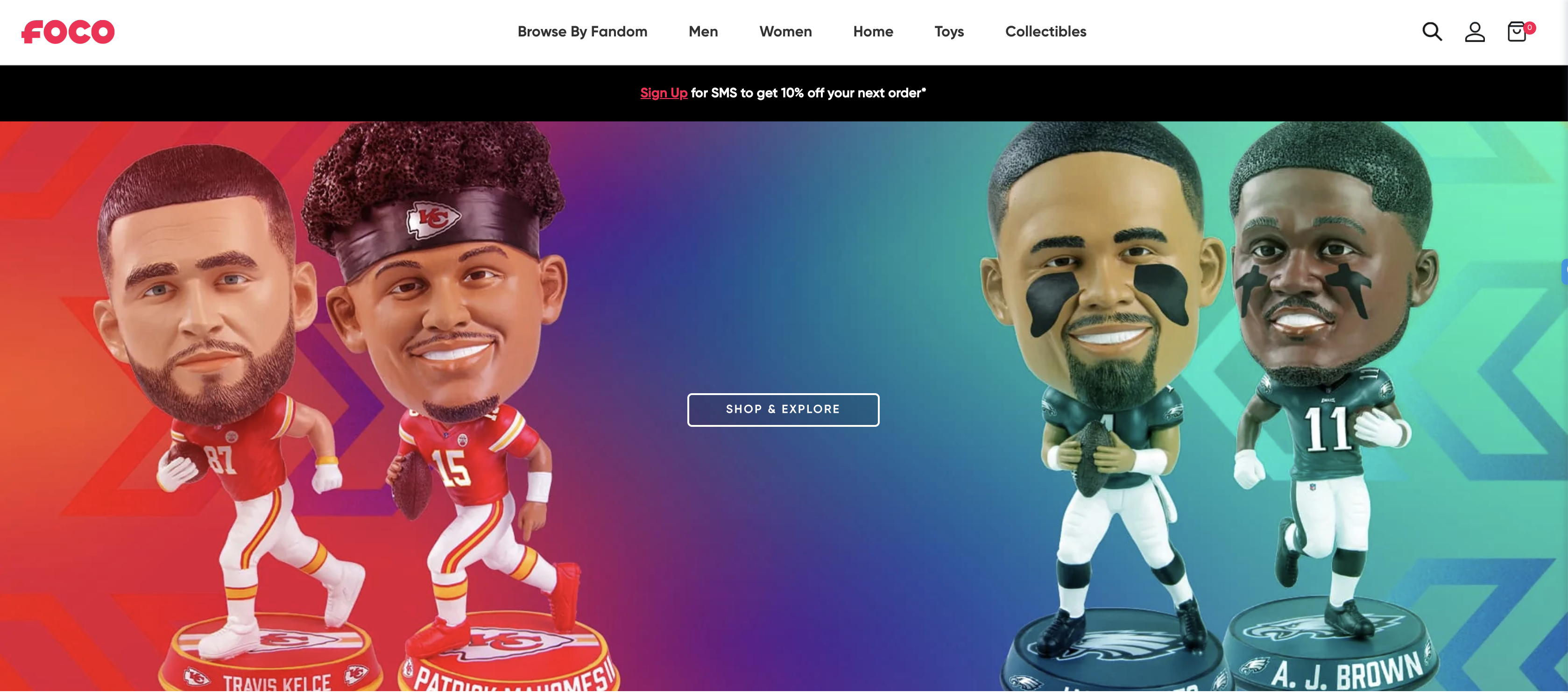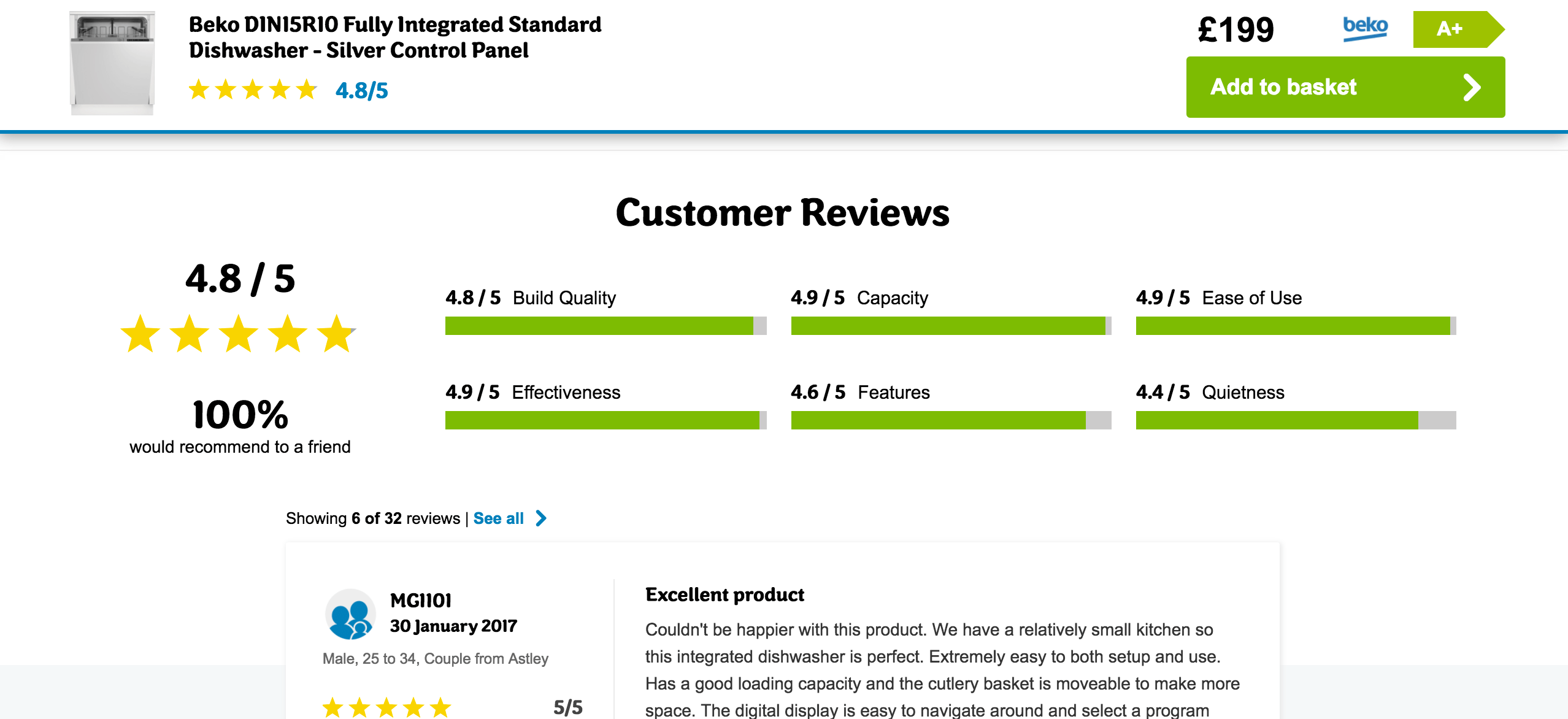A Complete Look at E-Commerce Brand Reputation Management
Jack D'Errico
Jack D'Errico
Importance of Brand
Since the dawn of artisan guilds and brand identity, your brand reputation is everything. From Pyrex kitchenware to Adobe photoshop, people trust the brands they know, the brands that have publicly worked well for others, and brands that take the time to build a strong reputation from the ground up. This is especially true in e-commerce, where brand trust is everything because there is no in-person try-before-buy experience.
Today, tracking a company’s e-commerce brand is easier than ever before. Not only is your website more accessible to the world than a local shop, but there are also dozens of third-party locations from Google to Glassdoor where those who know your brand have left their opinions for others to find. Your business has been rated and your products reviewed, often thousands of times. If you’re on social media. the way you post and interact forms part of your online brand reputation.
But how do you take control when your e-commerce brand presence so quickly snowballs through third party marketplaces and off-site platforms? Fortunately, you’re not the first – nor will you be the last – brand to tackle this challenge. There are dozens of ways to manage your online retail brand’s reputation, and we’re about to help you dive through the basics.
The Elements of E-Commerce Brand Reputation
- Your Online Presence
- Reviews Of Your Local Business
- Marketplace Product Reviews
- How You Respond to Reviews
- Social Media Activity
- Testimonials and Industry Referrals
- Online Employer Reputation
The elements of your online brand reputation are vast. Your type of business, your body of customers, and how you present yourself online all make a difference. Today, a company’s brand reputation takes a team effort just to quantify, let alone manage. So let’s take a look at this issue from every angle.
Your Brand’s Online Presence
- Homepage
- Product and Service Pages
- Blog Articles
- On-Site Customer Experience
- Widgets, Tools, and Resources
Begin with what you can control best: your intentional online presence through your website. As an ecommerce brand, you already know that your website is your virtual storefront: A picture window that everyone in the world (with unfettered internet access) can see. California to Maine, Japan to Norway, everyone can access your company website, even in regions where you don’t sell or ship.
Your homepage is the window and front-of-house. Your product pages are the shop floor or private displays where the selling gets done. Your blog articles are each their own landing page and a peek into how your brand views the world for the benefit of customers.

However, your website experience for logged-in customers may be the most powerful – whether you offer a complex customer experience app or a simple order history – as customers will report back to the world at large.
Lastly, a good set of widgets, tools, and information resources can provide that engagement and revenue boost that every e-commerce brand is looking for.
Reviews Of Your Local Business
- Amazon
- Etsy
- Third-Party Lists
As an e-commerce brand, you don’t have to worry about local business reviews like Google Maps or Yelp, but your brand will be rated in other ways. Your seller reputation on third-party marketplaces like Amazon, eBay, Walmart.com, and Etsy will matter. Likewise, you will likely find your brand rated in third-party lists that compare e-commerce brands and products.
What new clients can discover about your brand will influence how many new sales you earn through the network of trust.
Pay attention to the reviews, comments, and questions you get. Ask for positive reviews, and seek to resolve issues before they become negative reviews. most importantly, keep it cool. we’ll talk about responding to reviews in two shakes.
Marketplace Reviews Of Your Products
- Amazon
- eBay
- Etc. (pun intended)
Next, are the reviews your brand will receive if your products are sold on third-party markeplaces. These are critical for any e-commerce brand, as your current reviews will influence exposure and can snowball into an avalanche of new trust-based sales.
If you have physical products, they will be sold on third party marketplaces, new or used. Heck, if you sell software product keys, they will likely be sold on more obscure third-party marketplaces.
And anywhere your products are sold that accept reviews, reviews will accumulate. Know where these are. Use a monitoring system that identifies where your products and product images appear to gain a full view. And if you are selling products directly or through approved sellers, be prepared to offer calm and positive support.

Your Brand’s Response to Reviews
- Thank Positive Reviews
- Answer Questions Helpfully
- Problem Solve Negative Reviews
- Be Constructive with Haters
Tailoring the influence of both business and product reviews takes finesse. The single most important thing about how you handle your marketplace product reviews is how you respond. First, of course, always thank your positive reviewers and answer all questions in a friendly and informative way. As for negative reviews, you can actually turn them into positive reputation with smooth handling.
For example, a legitimate product complaint about a damaged piece might be responded to “We’re so sorry that the the “L” piece was shipped broken! Please know we do our best to ship only quality items, and your replacement part is already in the mail.”
However, a brand that receives a bogus negative review might respond “Hi Susan, we’re sorry your product was flawed, but your order doesn’t appear in our records and we don’t have a customer service agent named Kevin. You must have us confused with another brand!”
Believe it or not, both methods will have future readers (and customers) applauding your aplomb. New customers will often buy, knowing that you pay attention and take care of real complaints.
Your Social Media Activity
Building your brand reputation through social media has elements of both the control you have over your own website and the chaos that comes from a public forum. You can’t control what others say about your brand, but you can shape the conversation.
The first trick, of course, is to get people talking. Both KFC and Wendy’s are great examples of brands currently “winning” the social media game because they have become the center of lively, joke-rich conversations. But the great thing about social media is that you get to set the tone. If you want your page and hashtag to become known for art contests, cool how-to guides, or dramatic unboxings, you can lead that trend.
Social media is also where catastrophes like TikToks of customer service fails or workplace disasters will blow up – and how you publicly deal with these issues will also forge your brand reputation. Ideally, that reputation will become one of a cool-headed brand who can take responsibility, make things right, and move forward from whatever mistakes might occur. Because we’re all human, and readers remember that when you respond the right way.
Cultivating Testimonials and Referrals
What about more professional channels for building your e-commerce brand reputation? For many industries that are less likely to have a large presence on Google or Twitter, your online brand reputation is shaped by testimonials and quieter industry referrals.
B2C e-commerce can benefit from promoting unboxing videos and encouraging customers to share their cool product hacks through social media and linked reviews. B2B e-commerce may promote testimonials and professional referrals. Many brands also have found that a YouTube channel of pro tips and recent projects can have a huge impact on building a positive online reputation in the trades.
From custom handicrafts to industrial machines, testimonials and pro videos can help build both an off-the-cuff online brand reputation and grow your referral network.
Your Online Employer Reputation
- Indeed
- Glassdoor
Lastly, there is your employer reputation. This element of your brand’s image matters more in the 2020s than it ever has before. As the stone-cold-business Boomer and X generations retire, the more human and holistic Millennials and Gen X take over both the workplaces and the main body of consumers. This means that your employer reviews on sites like Indeed and Glassdoor (even Reddit) can make a big difference. And if your business hits the news with shady hiring practices, expect to do a lot of damage control.
Building a positive employer reputation is done in your job listings, your hiring ads, and even how well-treated your customer service teams seem to be when communicating with customers. You know when a help tech is overworked and powerless over the phone (or even through chat), and so do your customers. A careful cultivation of a positive employer reputation (and real-world followthrough) contributes in a subtle yet important way to how your online customers perceive the brand.
Hone Your E-Commerce Brand Reputation with Trellis
Are you ready to build and hone your online brand reputation? So are we. Here at Trellis, we know that every aspect of an e-commerce company’s online presence can influence how customers view your company and, therefore, your overall growth and market share. Contact us today to tackle your brand reputation from your homepage to your Glassdoor reviews and everything in between.